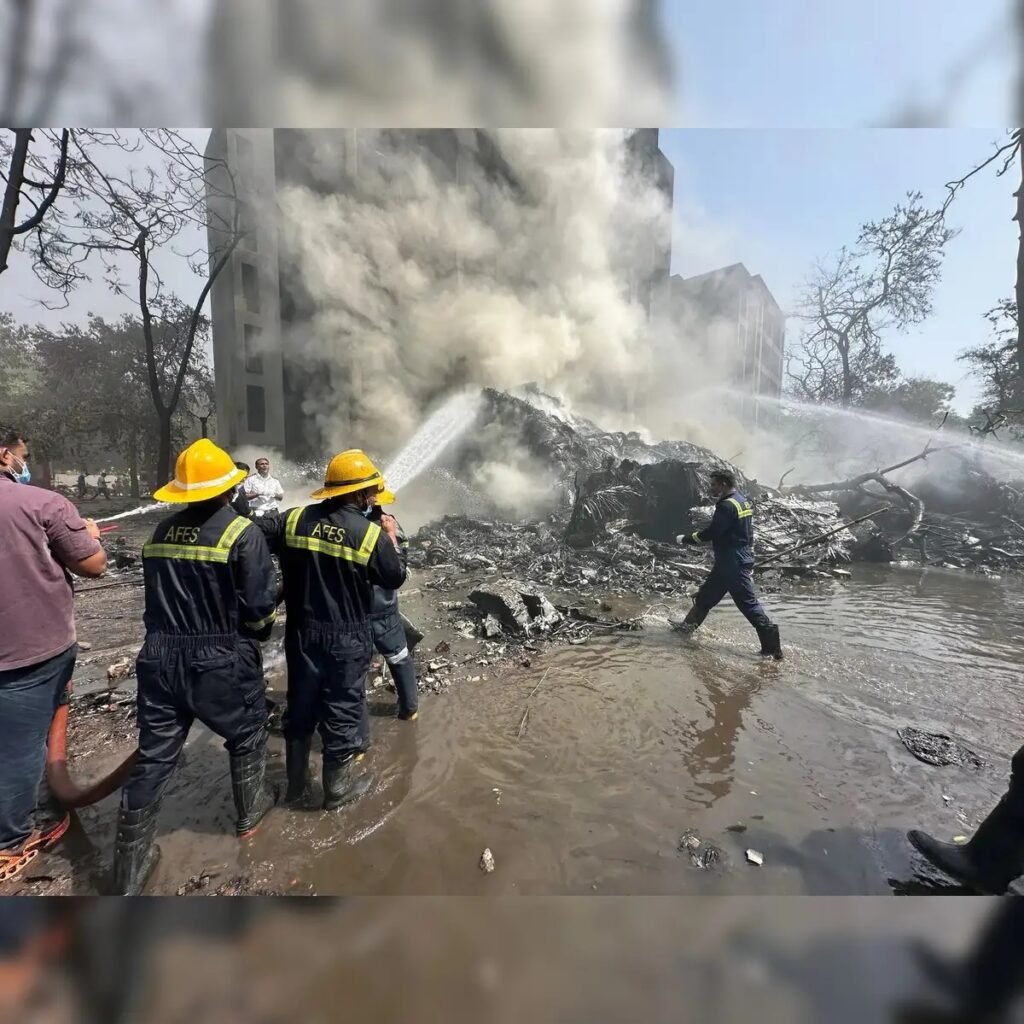On June 12, 2025, the world watched in shock as news broke of a tragic aviation disaster in Ahmedabad, India. Air India Flight 171, a Boeing 787 Dreamliner bound for London, crashed just minutes after takeoff from Sardar Vallabhbhai Patel International Airport. Of the 242 people on board, 241 lost their lives, making it one of the deadliest aviation incidents in Indian history. Only one passenger survived—miraculously escaping the wreckage that obliterated lives and buildings alike.
This article delves into what we know so far: what happened during those final moments, who the victims were, and how authorities are piecing together the tragedy.
The Flight That Never Made It
Air India Flight AI171 was scheduled for a routine international flight from Ahmedabad to London Gatwick. The aircraft, a Boeing 787-8 Dreamliner, had been cleared for departure and took off at 1:38 PM local time.
Just two minutes into the flight, tragedy struck.
The aircraft reached an altitude of approximately 625 feet before plummeting into a densely populated area near BJ Medical College. According to preliminary flight data, a sharp loss of altitude occurred almost immediately after takeoff. The pilot reportedly made a mayday call, but communication was lost shortly afterward. Seconds later, the plane crashed into a section of the medical college’s student hostel, setting off a massive explosion and fire that could be seen across the city.
The Sole Survivor
Amidst the devastation, one name emerged from the rubble: Vishwash Kumar Ramesh, a 32-year-old British national seated in 11A. As the sole survivor, his story has captured global attention.
According to rescue workers and eyewitnesses, Ramesh was found unconscious but alive in the debris, cushioned by a section of the aircraft’s fuselage. Doctors say his survival was nothing short of miraculous. He suffered fractures, burns, and internal injuries but is currently in stable condition under intensive care.
Authorities are hoping Ramesh’s testimony may shed light on the final moments before the crash.
Who Were the Victims?
The flight had 242 people on board: 230 passengers and 12 crew members. Among the dead were:
- 169 Indian nationals
- 53 British citizens
- 7 Portuguese nationals
- 1 Canadian citizen
Tragically, former Gujarat Chief Minister Vijay Rupani was also on board. On the ground, the crash claimed the lives of at least 6 medical students and staff from BJ Medical College, bringing the estimated death toll to over 260.
Entire families, business travelers, students, and Air India crew were lost in an instant. Vigils and memorial services have begun across India and abroad as families mourn their loved ones.
 What Caused the Crash?
What Caused the Crash?
The official cause of the crash is still under investigation. The Aircraft Accident Investigation Bureau (AAIB) of India is leading the inquiry, with assistance from Boeing, the U.S. National Transportation Safety Board (NTSB), and the UK’s Air Accidents Investigation Branch (AAIB).
Preliminary Theories Include:
- Mechanical Failure: Early data suggests that the landing gear may have malfunctioned and failed to retract after takeoff, potentially leading to an aerodynamic imbalance.
- Bird Strike or Engine Trouble: Witnesses reported hearing “strange engine noises” before the crash. Investigators are examining the possibility of a bird strike or engine stall.
- Pilot Error or System Malfunction: Investigators are analyzing the black box (flight data and cockpit voice recorders) recovered from the crash site.
While nothing has been confirmed yet, experts believe the speed at which the plane lost altitude points to a catastrophic failure rather than a navigational error.
Emergency Response: Swift but Overwhelmed
Ahmedabad authorities responded within minutes of the crash. Emergency vehicles, ambulances, and fire trucks were dispatched rapidly, and a “green corridor” was created to transport survivors and victims.
Hospitals across the city were put on high alert. The Indian Army was deployed for search-and-rescue operations and to help clear the debris. Unfortunately, due to the severity of the explosion and resulting fire, there was little hope for additional survivors.
Air India and Government Response
Air India and Tata Group, which now owns the airline, issued statements expressing profound sorrow. The airline has:
- Established a crisis management team
- Offered financial assistance and counseling to victims’ families
- Promised full cooperation with ongoing investigations
Indian Prime Minister Narendra Modi tweeted his condolences and called for a transparent, swift investigation. The Ministry of Civil Aviation has assured the public that every detail will be scrutinized to prevent future disasters.
Boeing Under the Microscope Again
This crash is a major blow to Boeing, particularly the Dreamliner series. While the Boeing 787 has had a strong safety record since its launch in 2011, this marks the first major fatal accident involving the model.
Boeing shares fell over 5% following the crash, and scrutiny has intensified globally. The company is expected to conduct a parallel internal review and provide technical support for the investigation.
Public Reactions and Global Condolences
Social media was flooded with tributes, condolences, and questions about airline safety. Leaders from around the world, including British Prime Minister Keir Starmer and Canadian Prime Minister Mary Chambers, expressed their support for India and the victims’ families.
Airports across India observed moments of silence, and vigils have been held in London, Lisbon, and New Delhi.
Lessons to Learn
This incident has raised critical questions:
- Are emergency safety protocols being followed rigorously by airlines?
- How prepared are airport response teams for such catastrophes?
- Are aircraft inspections and maintenance checks being conducted with the urgency they require?
The answers to these questions will be vital in restoring public confidence in air travel and preventing similar tragedies.
Looking Forward
As the investigation continues, families grieve, and a nation tries to make sense of an overwhelming loss. The road to healing will be long, and the scars of this disaster will remain for years to come.
But from tragedy, there must come change—better oversight, stronger safety protocols, and more transparent communication from airlines and manufacturers alike.
In the words of one bereaved mother at the memorial: “Let their lives not be lost in vain. Let it lead to something better.”
Conclusion
The Air India crash in Ahmedabad is a painful chapter in aviation history. It is a story of immense loss, unthinkable tragedy, and a single flicker of hope in one survivor’s resilience. As investigations uncover what really happened in those final 120 seconds, the world watches, hoping for answers—and, ultimately, accountability.


